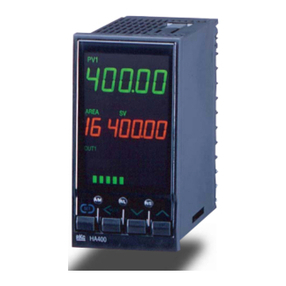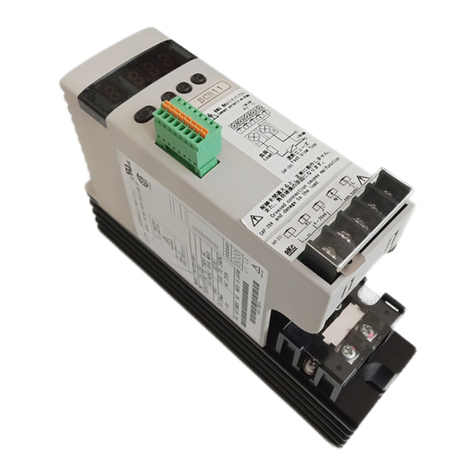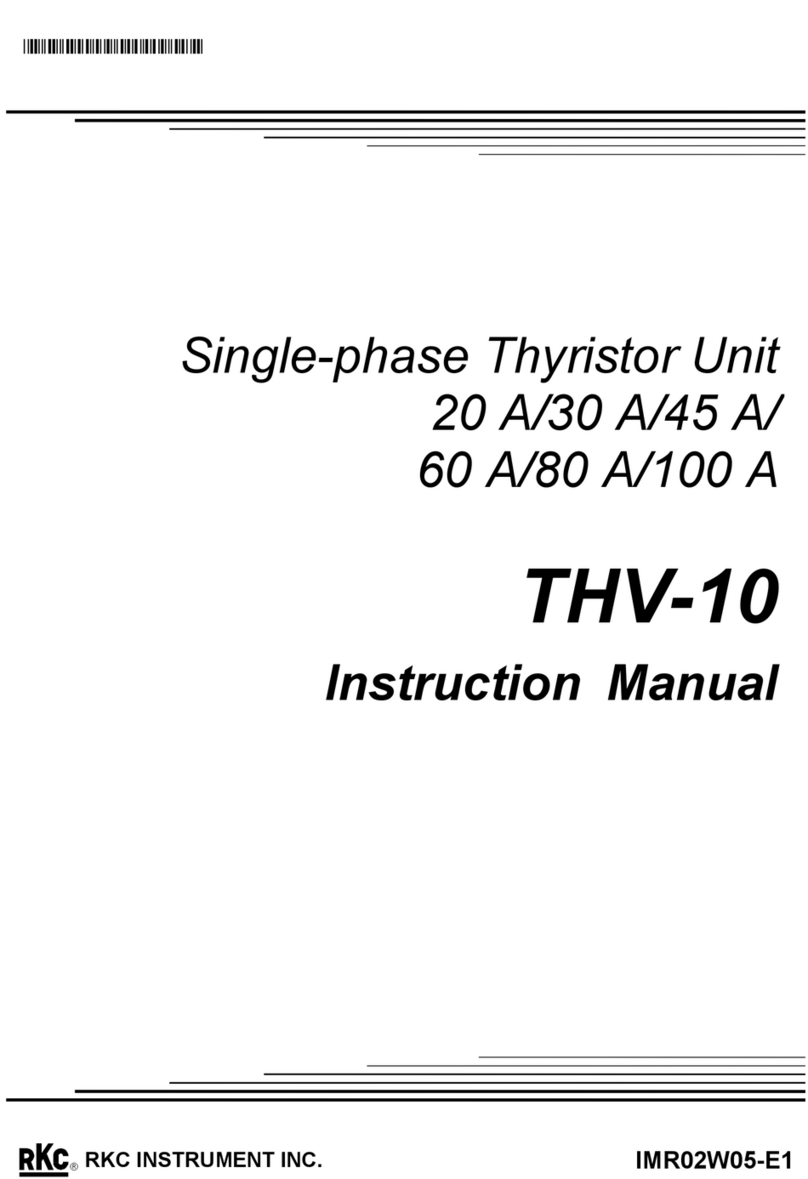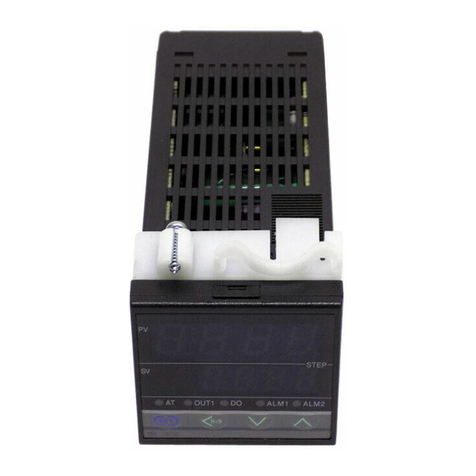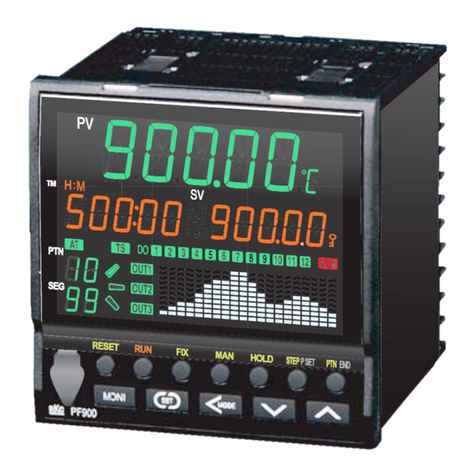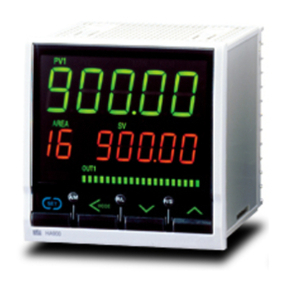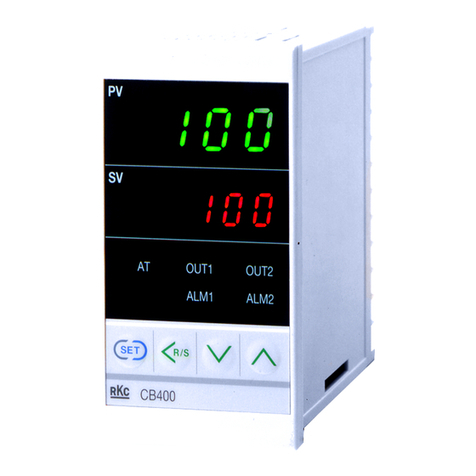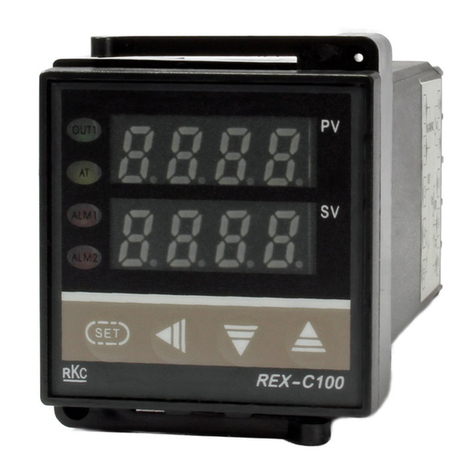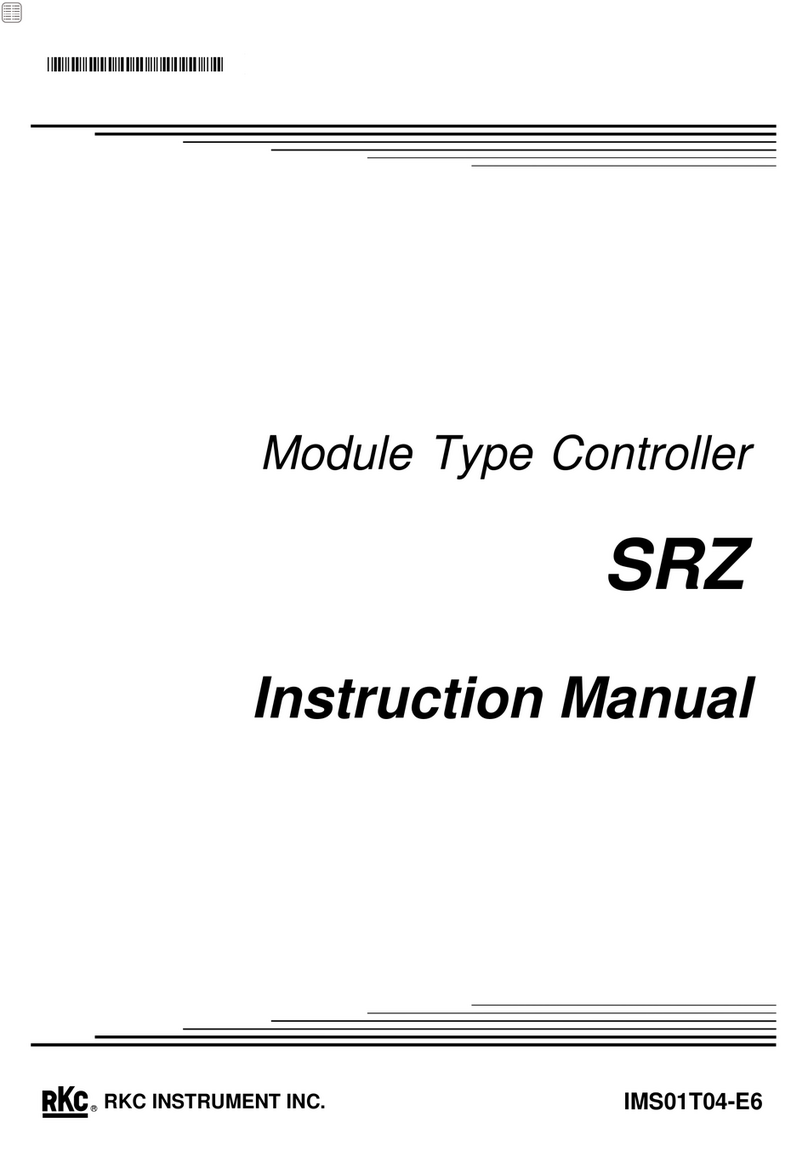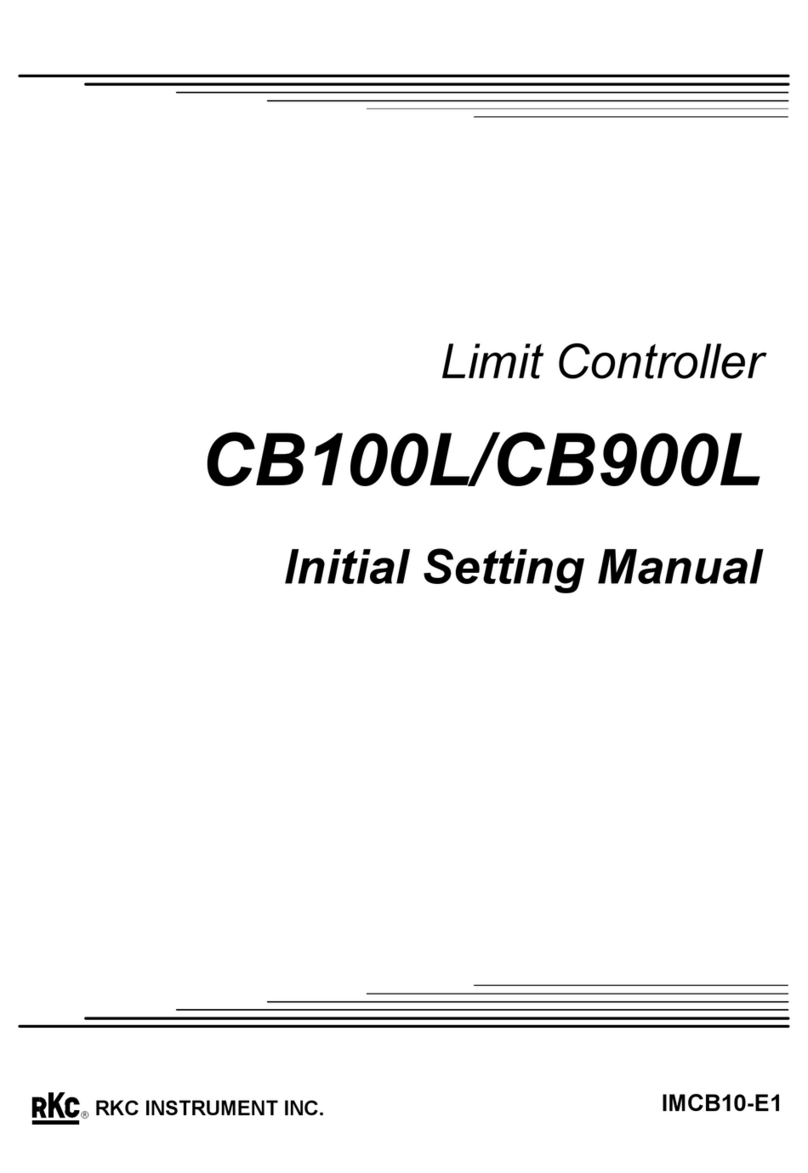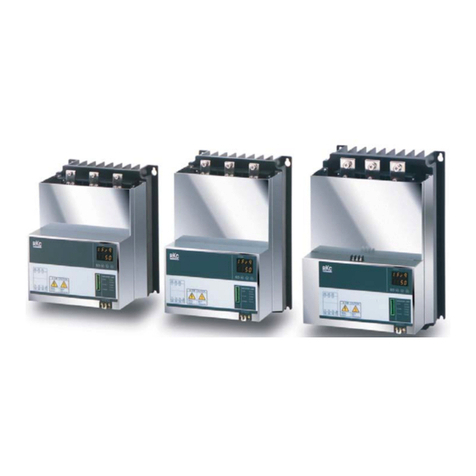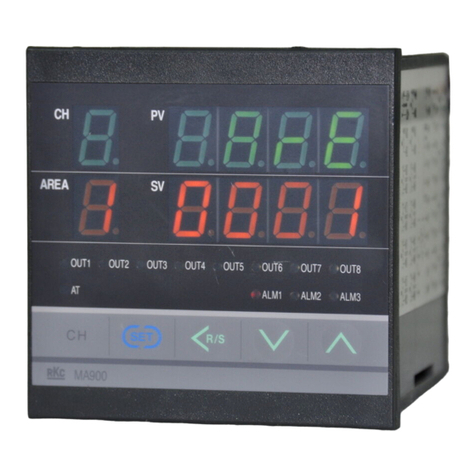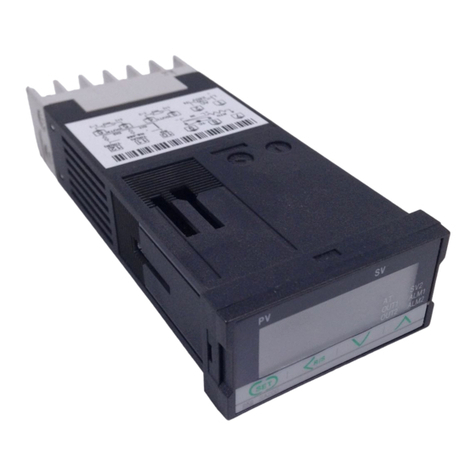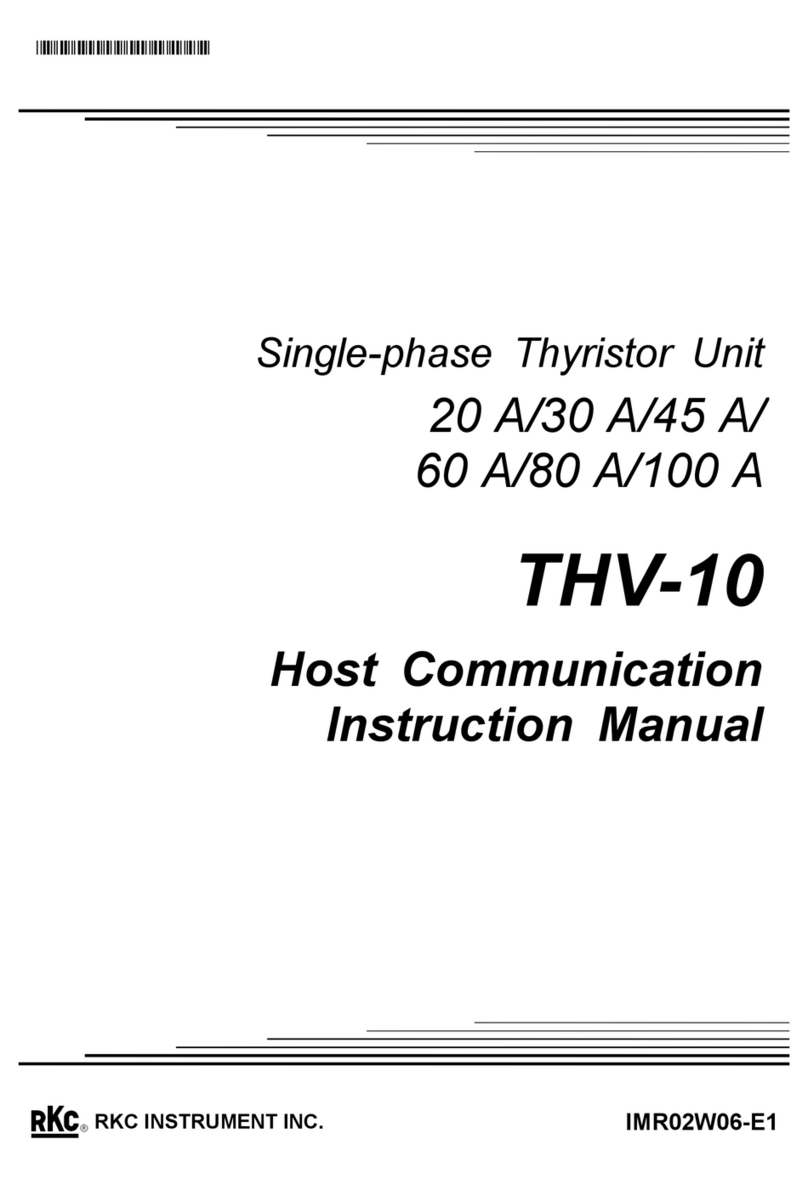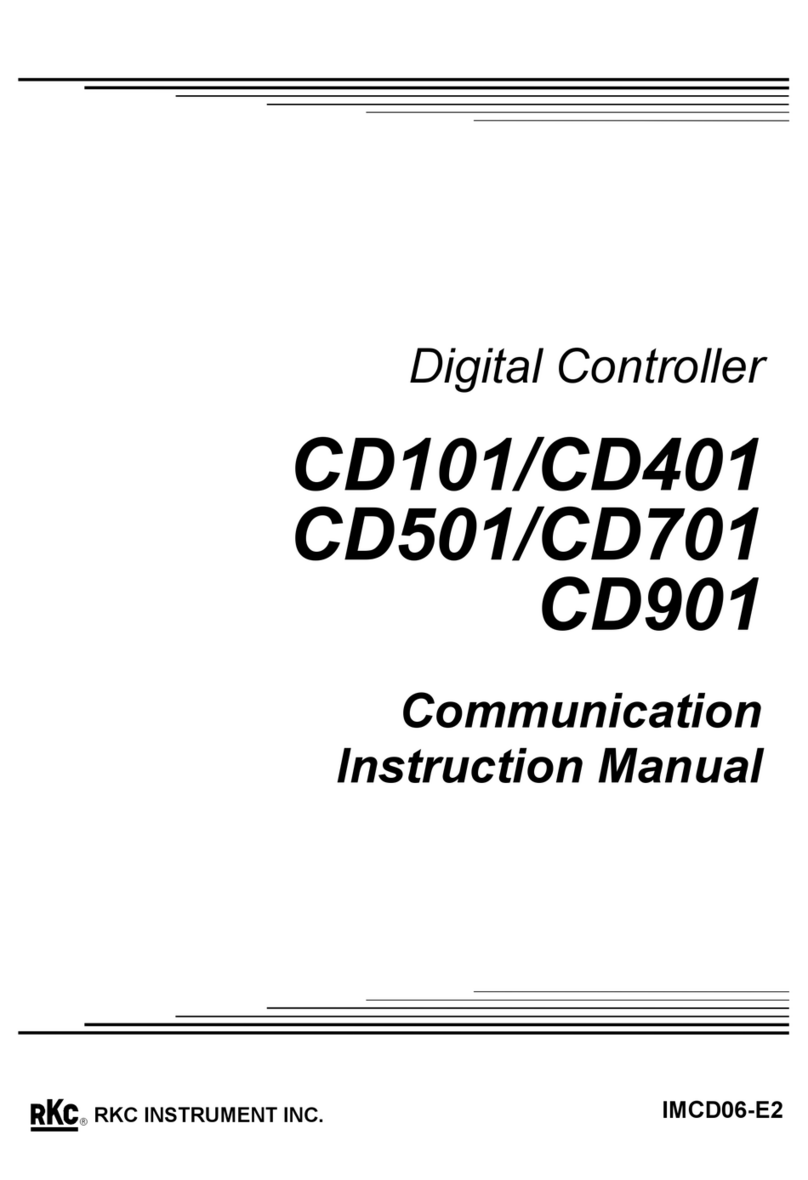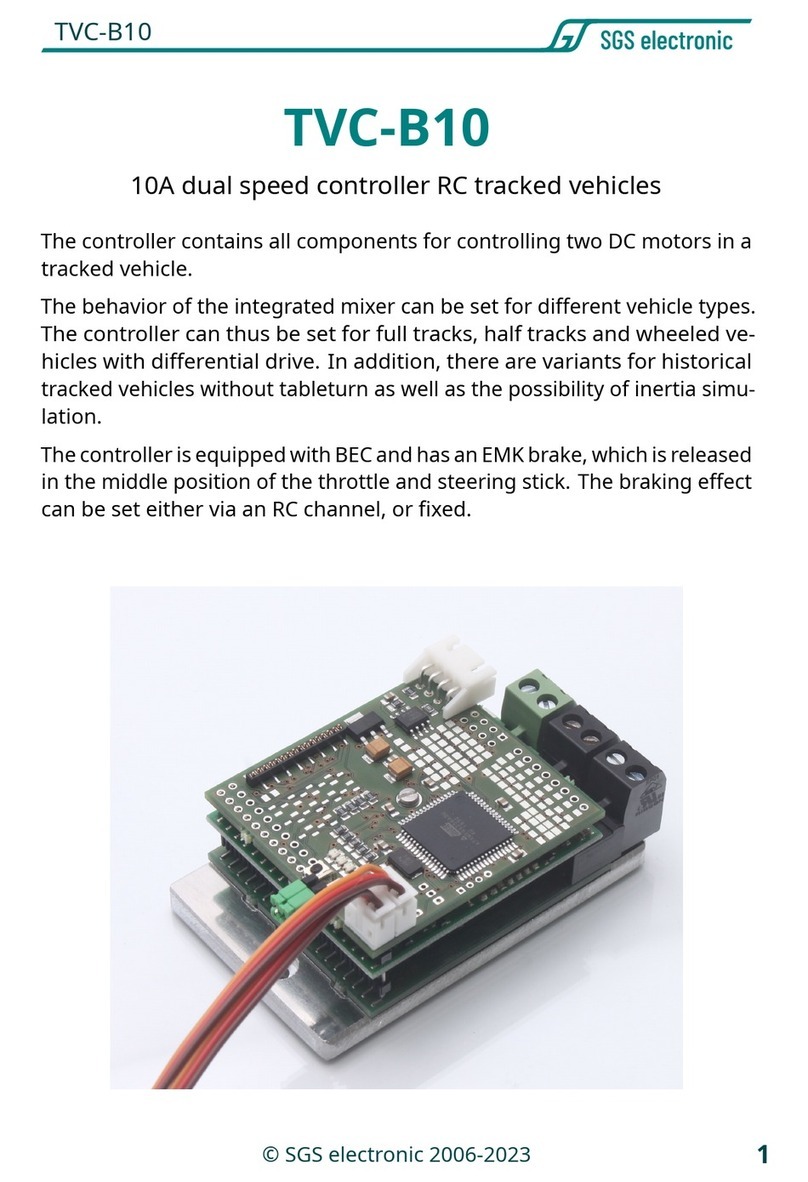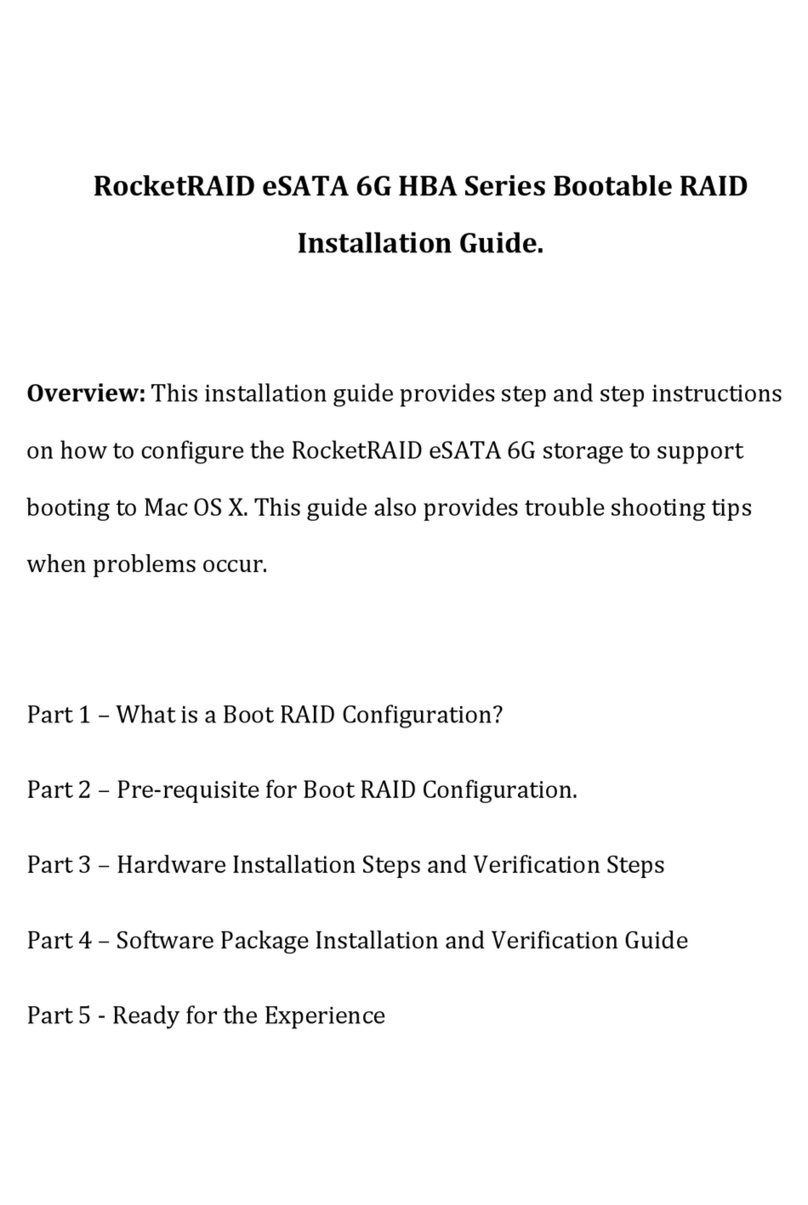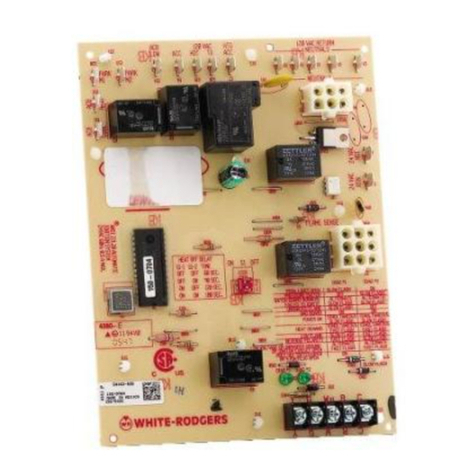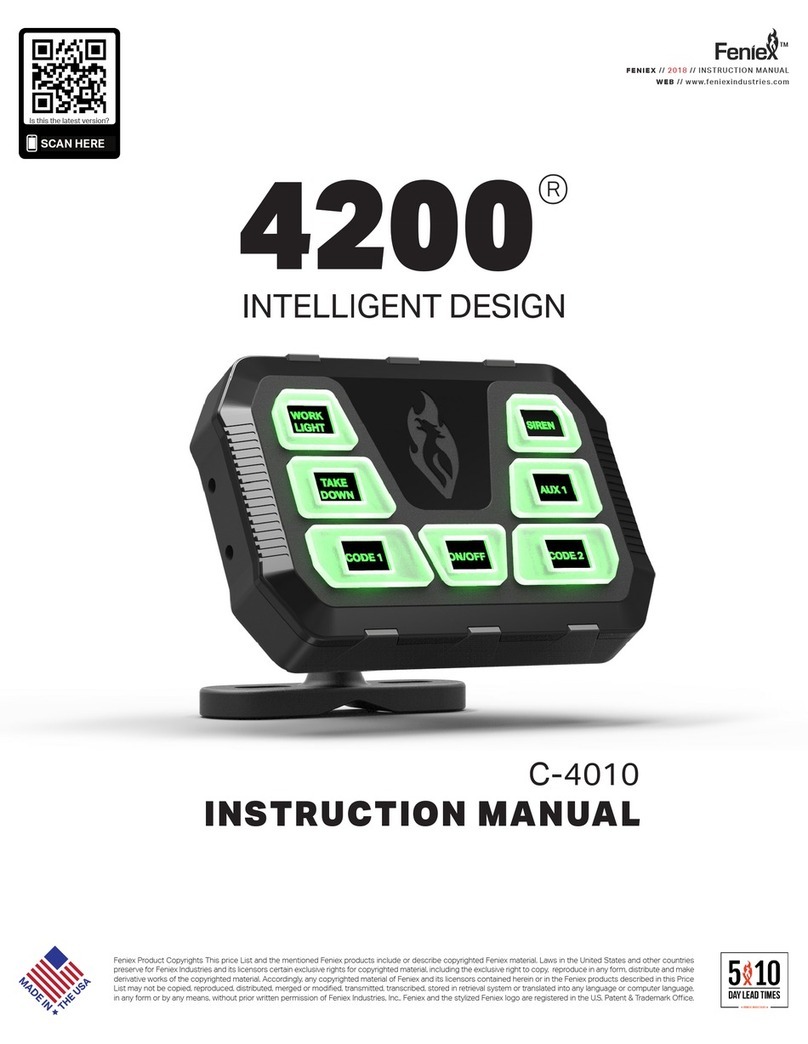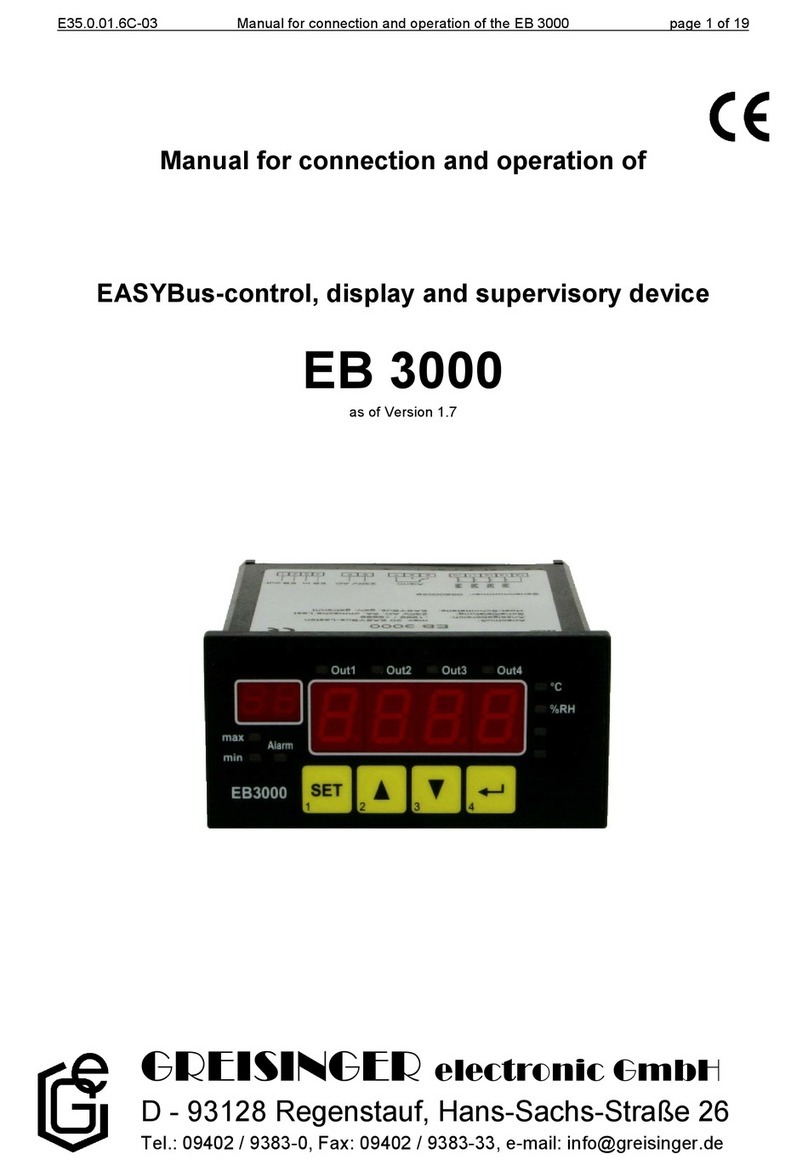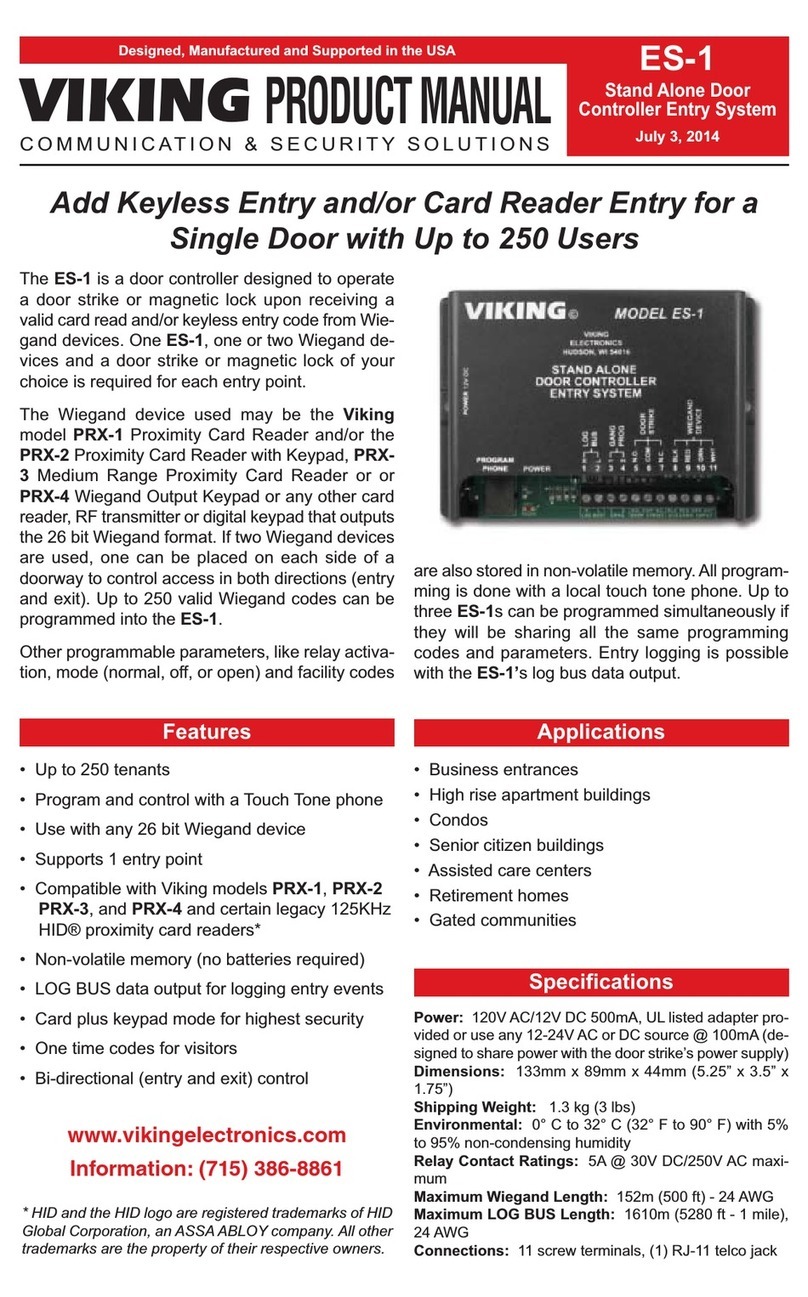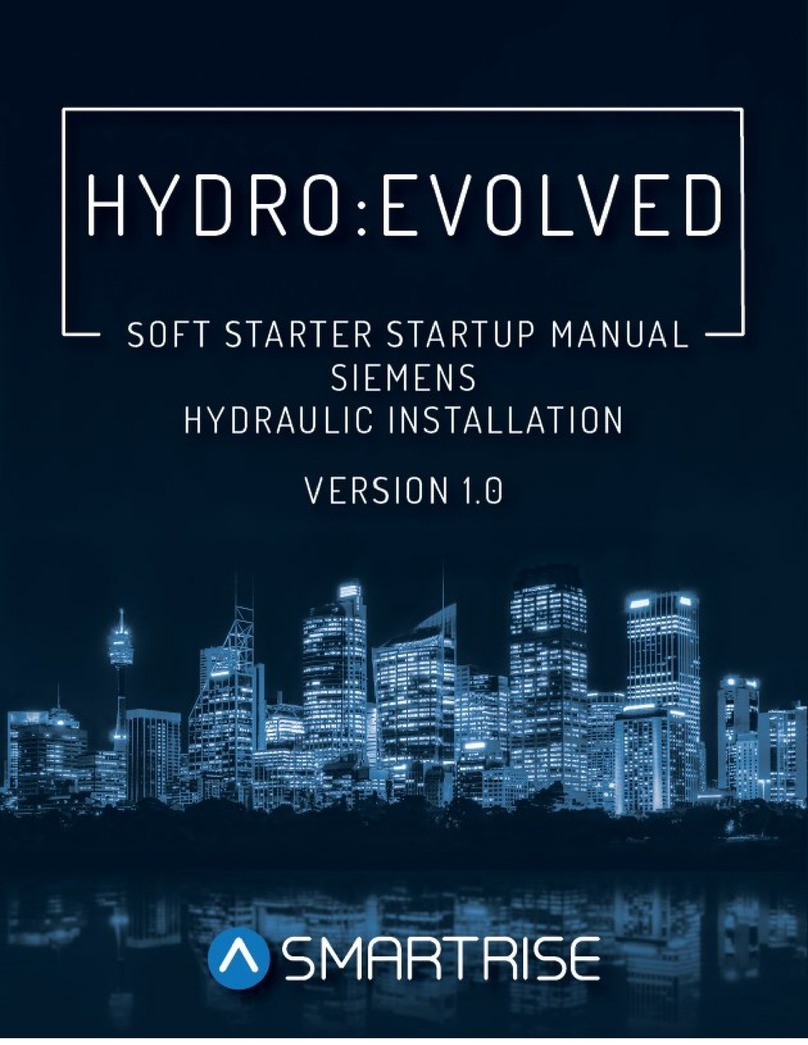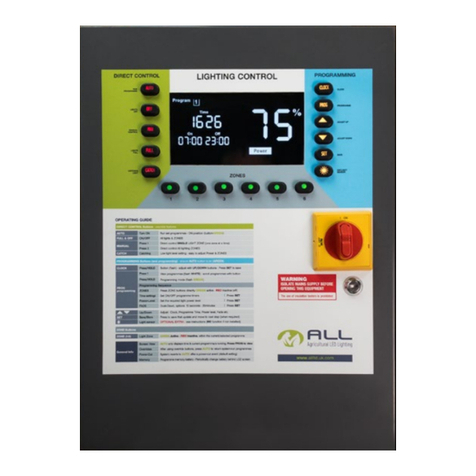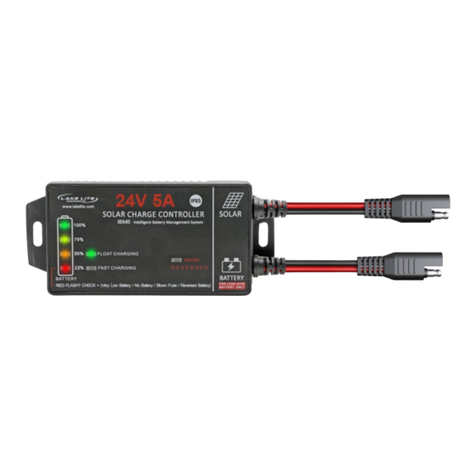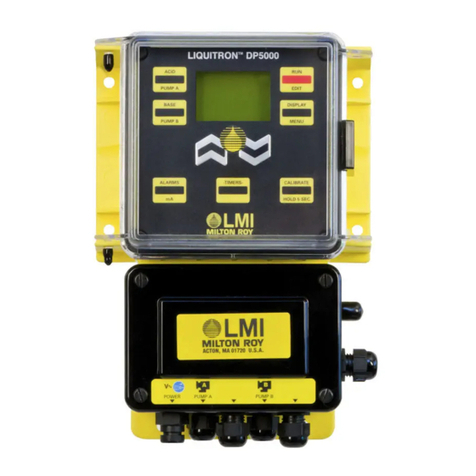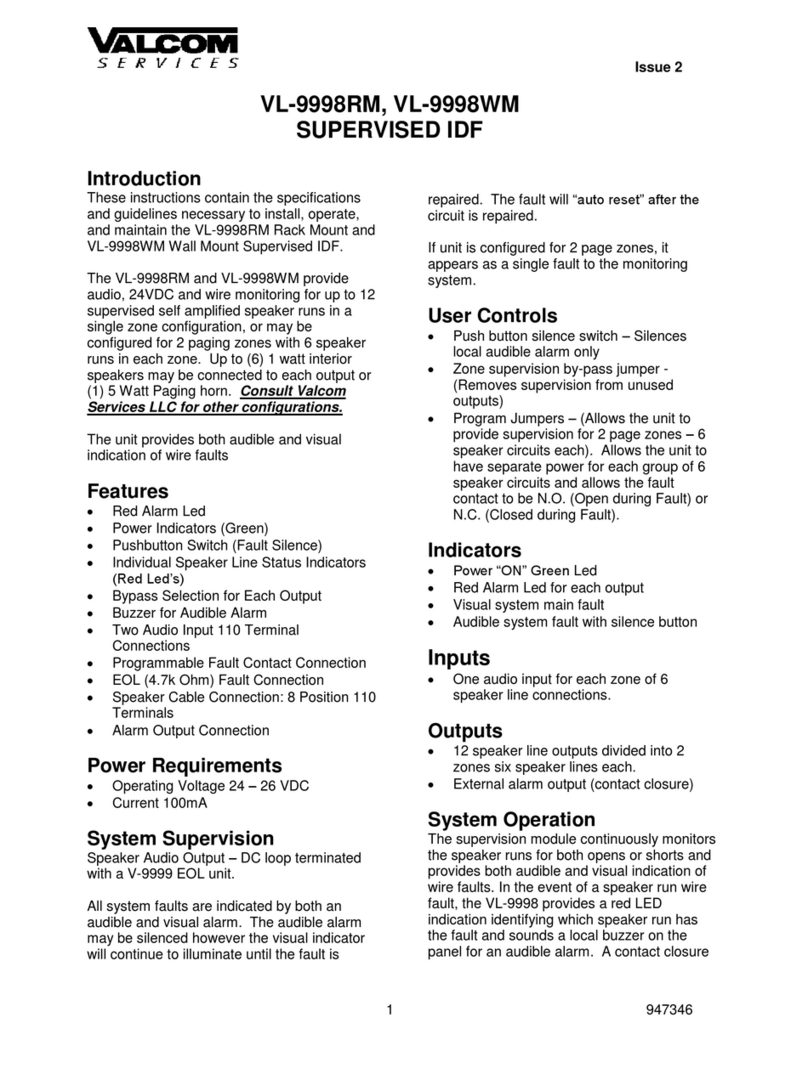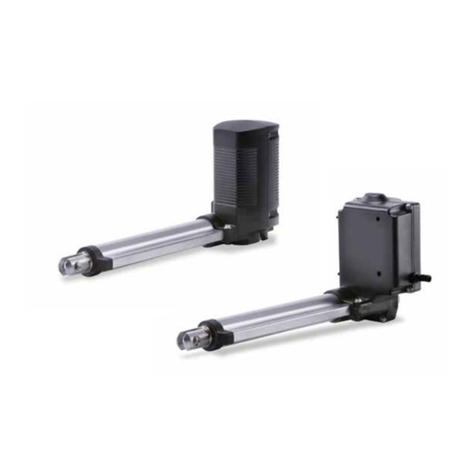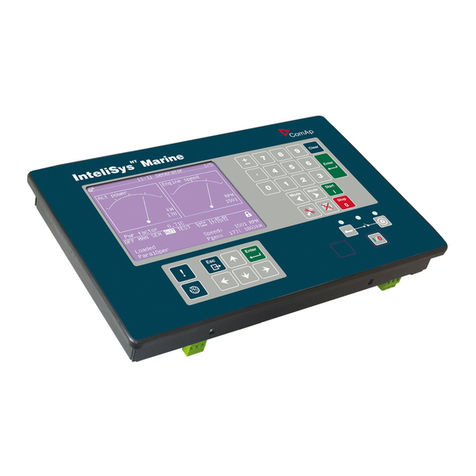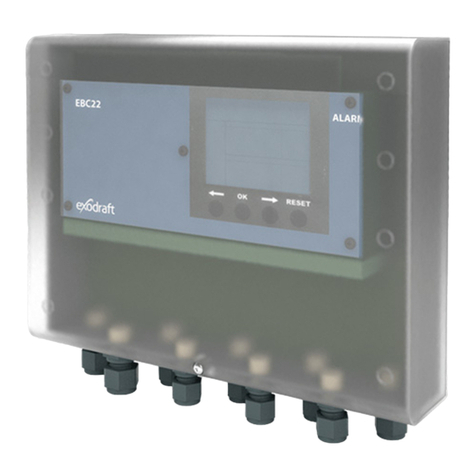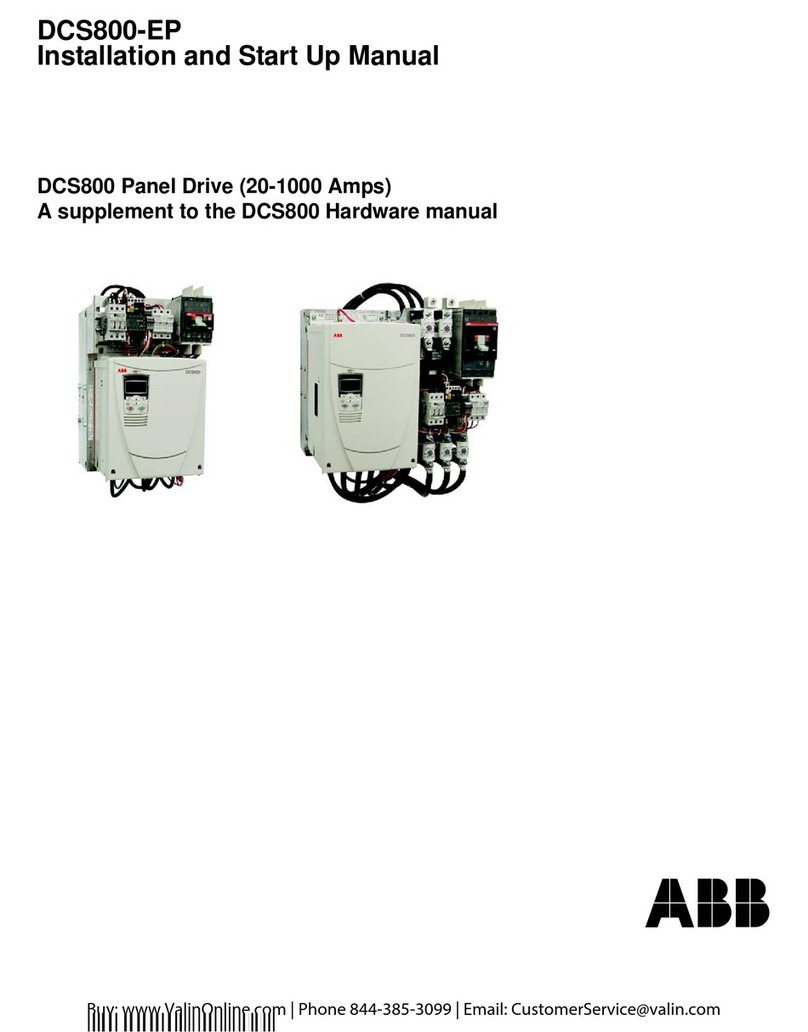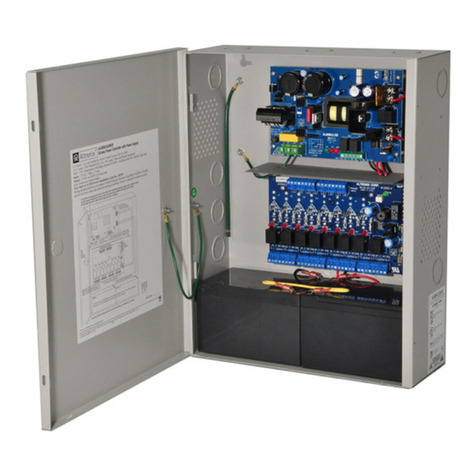
For detailed handling procedures and key operations, refer to separate
HA400/HA900/HA401/HA901 Operation Manual (IMR01N02-E).
The manual can be downloaded from the official RKC website:
http://www.rkcinst.com/english/manual_load.htm.
Digital Controller
IMR01N01-E8
Thank you for purchasing this RKC product. In order to achieve maximum performance and ensure
proper operation of your new instrument, carefully read all the instructions in this manual. Please
place the manual in a convenient location for easy reference.
This product is intended for use with industrial machines, test and measuring equipment. (It is not
designed for use with medical equipment and nuclear energy.)
This is a Class A instrument. In a domestic environment, this instrument may cause radio
interference, in which case the user may be required to take additional measures.
This instrument is protected from electric shock by reinforced insulation. Provide reinforced
insulation between the wire for the input signal and the wires for instrument power supply, source
of power and loads.
Be sure to provide an appropriate surge control circuit respectively for the following:
If input/output or signal lines within the building are longer than 30 meters.
If input/output or signal lines leave the building, regardless the length.
This instrument is designed for installation in an enclosed instrumentation panel. All high-voltage
connections such as power supply terminals must be enclosed in the instrumentation panel to
avoid electric shock by operating personnel.
All precautions described in this manual should be taken to avoid damage to the instrument or
equipment.
All wiring must be in accordance with local codes and regulations.
All wiring must be completed before power is turned on to prevent electric shock, instrument
failure, or incorrect action. The power must be turned off before repairing work for input break
and output failure including replacement of sensor, contactor or SSR, and all wiring must be
completed before power is turned on again.
To prevent instrument damage as a result of failure, protect the power line and the input/output
lines from high currents with a suitableovercurrent protection device with adequate breakingcapacity
such as fuse, circuit breaker, etc.
Prevent metal fragments or lead wire scraps from falling inside instrument case to avoid electric
shock, fire or malfunction.
Tighten each terminal screw to the specified torque found in the manual to avoid electric shock,
fire or malfunction.
For proper operation of this instrument, provide adequate ventilation for heat dispensation.
Do not connect wires to unused terminals as this will interfere with proper operation of the
instrument.
Turn off the power supply before cleaning the instrument.
Do not use a volatile solvent such as paint thinner to clean the instrument. Deformation or
discoloration will occur. Use a soft, dry cloth to remove stains from the instrument.
To avoid damage to instrument display, do not rub with an abrasive material or push front panel
with a hard object.
Do not connect modular connectors to telephone line.
When high alarm with hold action/re-hold action is used for Event function, alarm does not turn
on while hold action is in operation. Take measures to prevent overheating which may occur if
the control device fails. NOTICE
This manual assumes that the reader has a fundamental knowledge of the principles of
electricity, process control, computer technology andcommunications.
The figures, diagrams and numeric values used in this manual are only for purpose of illustration.
RKC is not responsible for any damage or injury that is caused as a result of using this
instrument, instrument failure or indirect damage.
RKC is not responsible for any damage and/or injury resulting from the use of instruments made
by imitating this instrument.
Periodic maintenance is required for safe and proper operation of this instrument. Some
componentshave a limited service life, orcharacteristics that change over time.
Every effort has been made to ensure accuracy of all information contained herein. RKC makes
no warranty expressed or implied, with respect to the accuracy of the information. The
information in this manual is subject to change without prior notice.
No portion of this document may be reprinted, modified, copied, transmitted, digitized, stored,
processed or retrieved through any mechanical, electronic, optical or other means without prior
written approval from RKC.
1. MOUNTING
Mounting Cautions
(1) This instrument is intended to be used under the following environmental conditions.
(IEC61010-1) [OVERVOLTAGE CATEGORY II, POLLUTION DEGREE 2]
(2) Use this instrument within the following environment conditions:
Allowable ambient temperature: 10 to 50 C (14 to 122 F)
Allowable ambient humidity: 5 to 95 %RH
(Absolute humidity: MAX. W. C 29 g/m3dry air at 101.3 kPa)
Installation environment conditions: Indoor use, Altitude up to 2000 m
(3) Avoid the following conditions when selecting the mounting location:
Rapid changes in ambient temperature
which may cause condensation.
Corrosive or inflammable gases.
Direct vibration or shock to the mainframe.
Water, oil, chemicals, vapor or steam
splashes.
(4) Mount this instrument in the panel considering the following conditions:
Provide adequate ventilation space so that heat does not build up.
Do not mount this instrument directly above equipment that generates large amount of heat
(heaters, transformers, semi-conductor functional devices, large-wattage resistors.)
If the ambient temperature rises above 50C (122 F), cool this instrument with a forced air fan,
cooler, etc. Cooled air should not blowdirectly on this instrument.
In order to improve safety and the immunity to withstand noise, mount this instrument as far
away as possible from high voltage equipment, power lines, and rotating machinery.
High voltage equipment: Do not mount within the same panel.
Power lines: Separate at least 200 mm.
Rotating machinery: Separate as far as possible.
For correct functioning mount this instrument in a horizontal position.
(5) In case this instrument is connected to a supply by means of a permanent connection, a switch or
circuit-breaker shall be included in the installation. This shall be in close proximity to the equipment
and within easy reach of the operator. It shall be marked as the disconnecting device for the
equipment.
Dimensions
Mounting Procedures
1. Prepare the panel cutout as specified in Dimensions.
2. Insert the instrument through the panel cutout.
3. Insert the mounting bracket into the mounting groove of theinstrument.
Do not push the mounting bracket forward. (Fig. 1)
4. Secure the bracket to the instrument by tightening the screw.
Take care to refrain from moving the bracket forward.
5.
Only turn about one full revolution after the screw touches the panel.
(Fig. 2)
If the screw has been rotated too tight, the screw may turn
idle. In such a case, loosen the screw once and tighten it
again until the instrument is firmly fixed.
6. The other mounting bracket should be installed in the same way
described in 3.to 5.
When the instrument is mounted, always secure with two mounting brackets so that upper
and lower mounting brackets are positioned diagonally.
The waterproof/dustproof (optional) on the front of the instrument conforms to IP65 when
mounted on the panel. For effective waterproof/dustproof, the gasket must be securely
placed between instrument and panel without any gap. If gasket is damaged, please contact
RKC sales office or the agent.
Removal Procedures
1.Turn the power OFF.
2. Remove the wiring.
3. Loosen the screw of the mounting bracket.
4. Hold the mounting bracket by the edge () and tilt it () to remove from
the case.(Fig. 3)
5. The other mounting bracket should be removed in the same way as
described in 3.and 4.
6. Pull out the instrument from the mounting cutout while holding the front
panel frame of this instrument. (Fig. 4)
2. WIRING
Wiring Cautions
For thermocouple input, use the appropriate compensation wire.
For RTD input, use low resistance lead wire with no difference in resistance between the three
or four lead wires.
To avoid noise induction, keep input signal wire away from instrument power line, load lines
and power lines of other electric equipment.
Signal connected to Voltage input and Current input shall be low voltage defined as “SELV”
circuit per IEC 60950-1.
If there is electrical noise in the vicinity of the instrument that could affect operation, use a noise
filter.
- Shorten the distance between the twisted power supply wire pitches to achieve
the most effective noise reduction.
- Always install the noise filter on a grounded panel. Minimize the wiring distance
between the noise filter output and the instrument power supply terminals to achieve
the most effective noise reduction.
- Do not connect fuses or switches to the noise filter output wiring as this will reduce
the effectiveness of the noise filter.
Allow approximately 5 seconds for contact output when the instrument is turned on.
Use a delay relay when the output line is used for an external interlock circuit.
Terminal Configuration (All the terminal configuration of HA400, HA401, HA900 and HA901 is the same.)
Specifications
Power supply voltage:
90 to 264 V AC [Power supply voltage range], 50/60 Hz (Rating: 100 to 240 V AC)
21.6 to 26.4 V AC [Power supply voltage range], 50/60 Hz (Rating: 24 V AC)
21.6 to 26.4 V DC [Power supply voltage range] (Rating: 24 V DC)
Power consumption:
HA400/HA401: 16.5 VA max. (at 100 V AC) 22.5 VA max. (at 240 V AC)
15.0 VA max. (at 24 V AC) 430 mA max. (at 24 V DC)
HA900/HA901: 17.5 VA max. (at 100 V AC) 24.0 VA max. (at 240 V AC)
16.0 VA max. (at 24 V AC) 470 mA max. (at 24 V DC)
Measured input: TCinput, RTD input, Voltage input, Current input
Optional input: Remote input (Not isolation type), Feedback resistance input,
CT input, Event input, Power feed forward input
Output 1 to Output 3:
Relay contact output: 250 V AC, 3 A (Resistive load), 1a contact
Electrical life: 300,000 times or more (Rated load)
Voltage pulse output: 0/12 V DC (Allowable load resistance 600 or more)
Current output: 0 to 20 mA DC, 4 to 20 mA DC
(Allowable load resistance 600 or less)
High-speed AT type HA400/HA900 Instruction
Standard AT type HA401/HA901 Manual
Voltage output: 0 to 5 V DC, 1 to 5 V DC, 0 to 10 V DC
(Allowable load resistance 1 kor more)
Triac output: Allowable load current: 0.4 A Minimum load current: 30 mA
Load voltage: 75 to 250 V AC
Sensor power supply output (Optional) [Only OUT3 is selectable]:
Rated voltage: 24 V DC 5 % Rated current: 24 mA max.
Output 4 and Output 5:
Relay contact output: 250 V AC, 1 A (Resistive load), 1a contact
Electrical life: 300,000 times or more (Rated load)
Control method: Brilliant PID control (Direct action, Reverse action,
Position proportioning or Cascade is available)
llowable ambient temperature:
10 to 50 C (14 to 122 F)
llowable ambient humidity: 5 to 95 %RH
Absolute humidity: 29 g/m3dry air at 101.3 kPa
Operating environment: There should be neither corrosive gases nor much dust.
Weight: HA400/HA401: Approx. 360 g
HA900/HA901: Approx. 460 g
To prevent injury to persons, damage to instrument and equipment, a
suitable external protection device shall be required.
All wiring must be completed before power is turned on to prevent electric
shock, fire or damage to instrument and equipment.
This instrument must be used in accordance with the specifications to
prevent fire or damage to instrument and equipment.
This instrument is not intended for use in locations subject to flammable or
explosive gases.
Do not touch high-voltage connections such as power supply terminals,
etc. to avoid electric shock.
RKC is not responsible if this instrument is repaired, modified or
disassembled by other than factory-approved personnel. Malfunction can
occur and warranty is void under these conditions.
!
WARNING
CAUTION
Mounting brackets: 2 (Waterproof/Dustproof type: 4)
Instruction Manual: 1 (IMR01N01-E8)
Product Check
Excessive dust, salt or iron particles.
Excessive induction noise, static electricity,
magnetic fields or noise.
Direct air flow from anair conditioner.
Exposure to direct sunlight.
Excessive heat accumulation.
Power supply wiring must be twisted and have a low voltage drop.
This instrument with 24 V power supply is not provided with an overcurrent protection device.
For safety install an overcurrent protection device (such as fuse) with adequate breaking capacity
close to the instrument.
- Fuse type: Time-lag fuse (Approved fuse according CSA C22.2 No.248.14 or UL248-14)
- Fuse rating: Rated current: 1.0 A
For an instrument with 24 V power supply input, supply power from “SELV” circuit defined as IEC
60950-1.
A suitable power supply should be considered in end-use equipment. The power supply must be
in compliance with a limited-energy circuits (maximum available current of 8 A).
Use the solderless terminal appropriate to the screw size.
- Screw size: M3×6 (With 5.8×8 square washer)
- Recommended tightening torque: 0.4 N・m (4 kgf・cm)
- Specified solderless terminals: With isolation
- Applicable wire: Solid/twisted wire of 0.25 to 1.65 mm2
Make sure that duringfield wiring parts of conductors can not
come into contact with adjacent conductive parts.
To prevent electric shock or instrument failure, always turn off the power
before mounting or removing the instrument.
!
WARNING
To prevent electric shock or instrument failure, do not turn on the power until all wiring is completed. Make sure that the wiring is correct before applying power
to the instrument.
!
WARNING
(4) Output 3
(Optional)
TC
TC
24
23
RTD
RTD
B
B
A
24
23
22
A
21
Voltage/Current
24
23
IN
(13) Measured input (1-input)
(6) Output 1 1
Relay contact
NO
OUT1
12
11
Voltage pulse/
Voltage/Current
OUT1
12
11
Triac
OUT1
12
11
(5) Output 2
OUT2
NO 10
9
Relay contact
Voltage pulse/
Voltage/Current
OUT2
10
9
Triac
OUT2
10
9
(4) Output 3
NO
OUT3
8
7
Relay contact
Voltage pulse/
Voltage/Current
OUT3
8
7
Triac
OUT3
8
7
(2) Output 5
Relay contact
3
4
OUT5
NO
(14) Measured input (2-input)
RTD
RTD2
B
B
A
21
20
19
A
B
B
22
24
23
RTD1
TC
TC1
21
20
24
23
TC2
Voltage/Current
IN2
21
20
24
23
IN1
In 2-input controller, input 1 and input 2 can be different
input types. Also, input 2 can be used as remote input
(Isolation type)
(3) Output 4
Relay contact
5
6
OUT4
NO
24V DC
Sensor
power supply
OUT3
8
7
When output 3 is used for a sensor
power supply (optional), outputs 4 and 5
are not available.
4Output 3 can be used as a power supply
(optional) for the transmitter (pressure
sensor, temperature sensor, etc).
(1) Power supply
24 V
DC
2
1
L
N
100-240 V
C
2
1
L
N
24 V
C
2
1
(9)Input 5
36
35
DI5
Contact
(10) Communication 1/Input (Optional)
RS-232C
RD
SD
SG
15
14
13
RS-485
T/R (B)
T/R (A)
SG
15
14
13
(11) Input 2
18
17
16
CT2
CT1
CT FBR
17
16
O
W
C
18
CT/PFF
18
17
16
PFF
CT1
(12) Input 2
Remote
20
19
(Optional
Contact
30
DI2
DI1
DI3
33
32
34
31
DI4
13
14
15
16
17
18
19
20
21
22
23
2
25
26
27
28
29
30
31
32
33
34
35
3
1
2
3
4
5
6
7
8
9
10
11
12
(1)
(2)
(3)
(4)
(5)
(6)
(8)(7) (9)
(10)
(11)
(12)
(13)
1-input controller
13
14
15
16
17
18
19
20
21
22
23
2
25
26
27
28
29
30
31
32
33
34
35
3
1
2
3
4
5
6
7
8
9
10
11
12
(1)
(2)
(3)
(4)
(5)
(6)
(8)(7) (9)
(10)
(11)
(14)
2-input controller
(7)Communication 2 (Optional)
RS-422A
R (A)
28
T (A)
26
SG
25
R (B)
29
T (B)
27
PROFIBUS
VP
DGND
28
RxD/TxD-P
26
25
27
RxD/TxD-N
RS-232C
RD
27
SD
26
SG
25
RS-485
T/R (B)
27
T/R (A)
26
SG
25
DeviceNet
CAN-L
28
V
25
V
29
26
CAN-H
27
Drain
CC-Link
SLD
28
DA
25
FG
29
26
DB
27
DG
OUT1 and OUT2 are not isolated from each otherexcept for relay or triac output.
2Remote input, CT input, PFF input and FBR input are not isolated between measured input.
CT: Current transformer input
PFF: Power feed forward input
FBR: Feedback resistance input
5 When the CC-Link communication
(optional) is specified, these
terminals are not available.
(Optional
(8)Input 5
RS
Contact
13
DI6
14
15
DI7
Fi
.1
Fi
.2
Fi
. 3
Front panel
frame
Pull out
Panel Fi
. 4
3.2 MIN
5.5 MA
4 mm
*1 Rubber (Optional) *2 Up to 4 mounting brackets may be used.
*3 If the HA400/HA401s or HA900/HA901s have waterproof/dustproof (optional), protection will be compromised and
not meet IP65 by close mounting.
*4 When controllers are closely mounted, ambient temperature must not exceed 50 °C (122 F).
For mounting of the HA400/HA401 or HA900/HA901, panel thickness must be between 1 to 10 mm.
When mounting multiple HA400/HA401s or HA900/HA901s close together, the panel strength should be checked to
ensure proper support.
25 45
0.6
0
30 0.8
0
92
Individual mounting
L = 48×n-3
n: Number of units (2 to 6)
0.8
0
92
L 0.6
0
Close mounting
3,
4
30 0.8
0
92
920.8
0
25
L = 96×n-4
n: Number of units (2 to 6)
0.8
0
92
L
0.8
0
Individual mounting Close mounting
3,
4
HA400/HA401
(Unit: mm)
11.1
10.1 100
1
*1
91.8
110.8 44.8
48
96
91.8
*2
96
96
HA900/HA901
11.1
10.1 100
1
*1
91.8
110.8
(Unit: mm)


